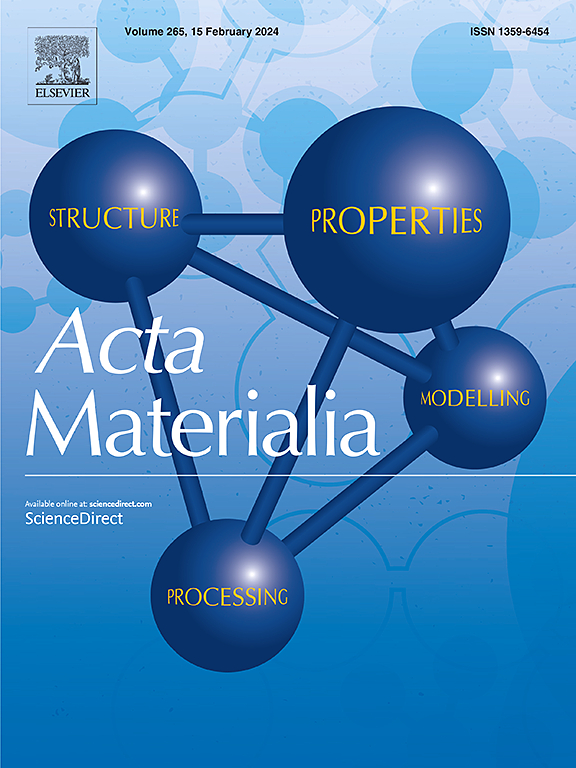Origin of exceptional structural stability in refractory amorphous high-entropy alloys under ion irradiation
IF 8.3
1区 材料科学
Q1 MATERIALS SCIENCE, MULTIDISCIPLINARY
引用次数: 0
Abstract
Refractory amorphous high-entropy alloys (RAHEAs) are promising candidates for advanced nuclear coating materials due to their superior structural stability and ion irradiation tolerance. However, the atomic-level irradiation damage mechanisms remain poorly understood. In this work, molecular dynamics (MD) simulations are performed to systematically investigate the ion irradiation responses of Ti(Zr)HfNbTa metallic glasses (MGs) at varying primary knock-on atom (PKA) energies and temperatures. Our results show that the collision cascading behaviors in RAHEAs differs significantly from that in crystalline and conventional metallic glass counterparts. Due to atomic sluggish long-range diffusion and reduced dynamic heterogeneities, RAHEAs exhibit suppressed yet spatially uniform atomic dynamics. This leads to slower PKA energy dissipation and a longer trajectory of displacement cascades, with a smaller cascade-affected zone and more rapid structural recovery rate. These features contribute to high global microstructural stability and low ion irradiation damage. As a result, RAHEAs exhibit less degradation in mechanical performance under ion irradiation. This study provides new insights into the ion irradiation resistance mechanisms of RAHEAs, offering guidance for the development of novel radiation-resistant materials.


离子辐照下难熔非晶高熵合金异常结构稳定性的成因
难熔非晶态高熵合金(RAHEAs)具有优良的结构稳定性和离子辐照耐受性,是先进核涂层材料的理想选择。然而,原子水平的辐照损伤机制仍然知之甚少。在这项工作中,进行了分子动力学(MD)模拟,系统地研究了Ti(Zr)HfNbTa金属玻璃(mg)在不同初级敲原子(PKA)能量和温度下的离子辐照响应。我们的研究结果表明,RAHEAs中的碰撞级联行为与晶体和传统金属玻璃中的碰撞级联行为有很大不同。由于原子缓慢的远程扩散和减少的动力学异质性,RAHEAs表现出抑制但空间均匀的原子动力学。这导致PKA能量耗散较慢,位移级联轨迹较长,级联影响区较小,结构恢复速度较快。这些特点有助于提高整体微观结构的稳定性和低离子辐照损伤。结果表明,离子辐照下RAHEAs的力学性能下降较少。本研究为RAHEAs耐离子辐照机理提供了新的认识,为新型耐辐射材料的开发提供了指导。
本文章由计算机程序翻译,如有差异,请以英文原文为准。
求助全文
约1分钟内获得全文
求助全文
来源期刊

Acta Materialia
工程技术-材料科学:综合
CiteScore
16.10
自引率
8.50%
发文量
801
审稿时长
53 days
期刊介绍:
Acta Materialia serves as a platform for publishing full-length, original papers and commissioned overviews that contribute to a profound understanding of the correlation between the processing, structure, and properties of inorganic materials. The journal seeks papers with high impact potential or those that significantly propel the field forward. The scope includes the atomic and molecular arrangements, chemical and electronic structures, and microstructure of materials, focusing on their mechanical or functional behavior across all length scales, including nanostructures.
 求助内容:
求助内容: 应助结果提醒方式:
应助结果提醒方式:


